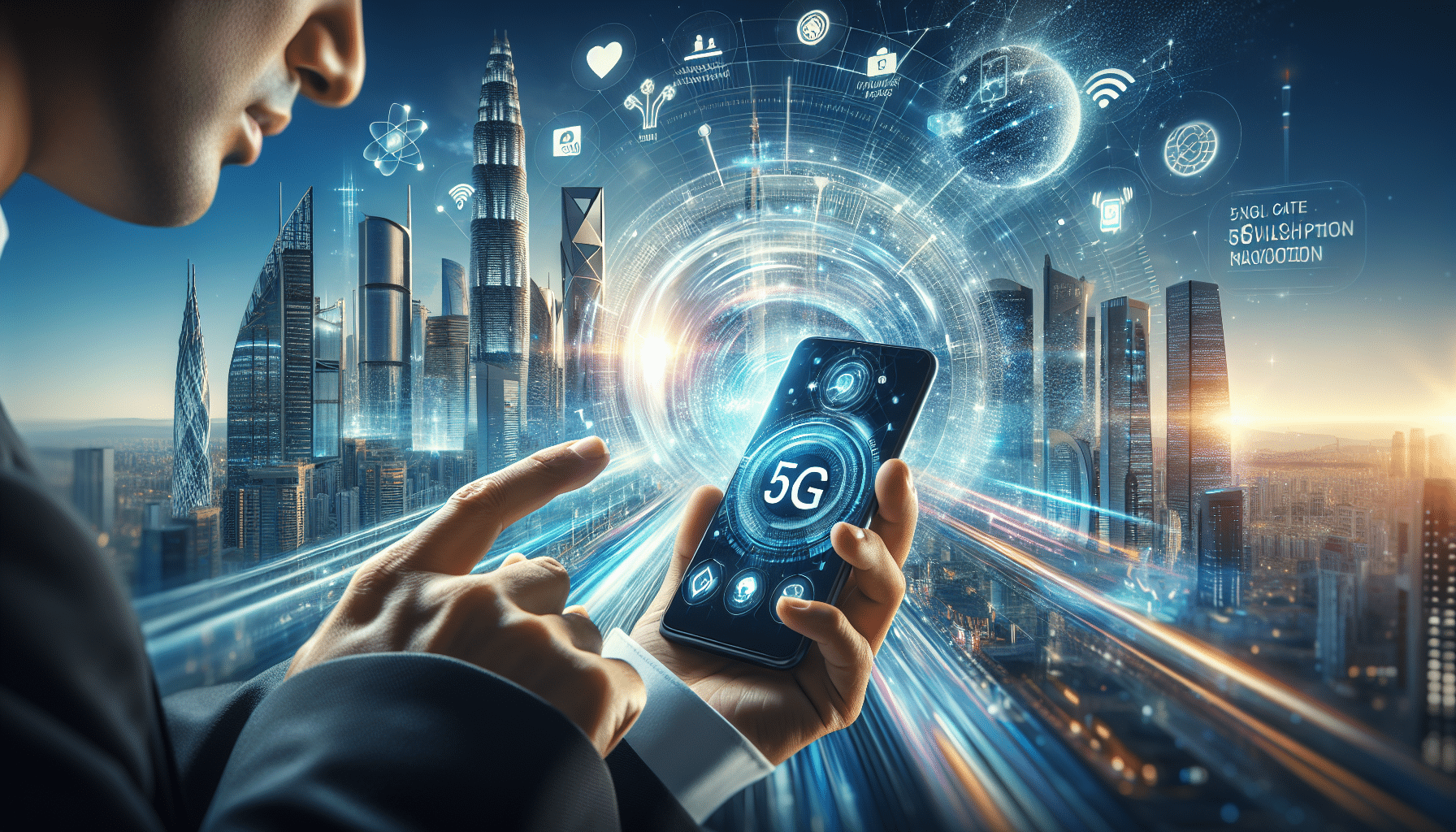Ads
The arrival of 5G is marking a turning point in the digital world, revolutionizing not only the way we access information but also how we interact with the virtual world.
This technological leap promises not only unprecedented download speeds, but also more reliable connectivity and a seamless browsing experience.
Ads
As this technology rolls out globally, the implications for users, businesses, and societies are immense, transforming everything from entertainment to the critical infrastructure of our smart cities.
In this context, the impact of 5G goes far beyond simple improvements in internet speed. Its applications are revolutionizing entire sectors, from telemedicine to augmented and virtual reality, enabling innovations that, until recently, seemed like the stuff of science fiction.
Ads
Low latency and the ability to support a larger number of connected devices open up a range of possibilities for developers and consumers, unleashing a new digital ecosystem full of opportunities.
As we delve deeper into the advancements of 5G, it's essential to understand how this technology is reshaping modern user expectations and redefining what it means to be connected.
We'll explore the key applications of 5G and how they are shaping the future of digital interaction, providing insight into the endless possibilities that await us on this exciting journey toward an era of unprecedented connectivity.
See also:
- Listen to your favorite music anywhere
- Master the rhythm with our app
- Discover your destination with Star Map
- Discover ghosts with our app!
- Master karate like an expert at home
Impact of 5G on Connectivity
The advent of 5G technology has unleashed a true revolution in the way people connect and navigate the internet.
This new generation of wireless connectivity promises significantly faster speeds, reduced latency, and expanded network capacity.
As 5G rolls out globally, users are experiencing a marked improvement in the quality of their internet connections, enabling smooth streaming of high-definition video, instant downloads of large files, and faster, more efficient web browsing.
5G is designed to support a greater number of simultaneously connected devices, which is essential in a world where the Internet of Things (IoT) is constantly expanding.
From smart home devices to connected cars, the ability to seamlessly manage a multitude of devices is a significant shift in today's connectivity.
This expanded capacity also translates into benefits for industrial sectors, where real-time connectivity can optimize processes and improve operational efficiency.
Transformations in Content Consumption
The arrival of 5G is transforming the way we consume digital content. One of the most impacted areas is entertainment, where users can now enjoy augmented reality (AR) and virtual reality (VR) experiences with unprecedented quality and fluidity.
Streaming platforms are also seeing significant changes, allowing users to seamlessly stream 4K and 8K content, which was unthinkable with previous generations of connectivity.
In addition, 5G is opening up new possibilities for content creators, who can now explore more interactive and immersive formats.
Mobile gaming, for example, is evolving to offer real-time multiplayer experiences with enhanced graphics, increasing the industry's appeal and competitiveness.
The speed and capacity of 5G also enable the development of applications that were previously limited by network capacity, such as telemedicine applications that require high-quality video streaming for accurate diagnoses.
Innovations in Industry and Education
The impact of 5G extends beyond entertainment and content consumption. In the industrial sector, this technology is enabling the implementation of advanced solutions such as factory automation and real-time supply chain management.
With the ability to stream real-time data from sensors and equipment, businesses can optimize their operations, reduce downtime, and improve overall productivity.
In the education sector, 5G is transforming online learning. Educational institutions can now offer virtual classes that are as interactive and effective as in-person classes, thanks to the ability to stream high-quality video and enable real-time collaboration.
Students can participate in immersive learning experiences, such as virtual field trips and augmented reality labs, that enhance their understanding and retention of educational material.
Challenges and Opportunities of 5G
Despite the many benefits of 5G, its implementation is not without challenges. One of the main obstacles is the infrastructure needed to support this technology.
The installation of antennas and base stations requires significant investment and careful planning, especially in densely populated urban areas.
In addition, there are concerns about data security and privacy, as increased connectivity also means greater exposure to potential cyber threats.
However, the opportunities presented by 5G far outweigh these challenges. Smart cities, for example, will benefit greatly from improved connectivity, enabling more efficient management of urban resources such as traffic, energy, and utilities.
Businesses can also leverage 5G capabilities to innovate their business models, developing products and services that were previously unviable due to connectivity limitations.
The Future of Connectivity with 5G
Looking ahead, 5G is emerging as a key catalyst for digital transformation across all sectors. As coverage expands and the technology matures, we are likely to see an increase in technological innovation and the creation of new business models.
Augmented reality and virtual reality, which rely heavily on fast and reliable connectivity, will become even more integrated into our daily lives, from retail to entertainment and education.
The impact of 5G will also be significant in areas such as healthcare, where telemedicine and connected medical devices can transform the way healthcare is delivered.
With the ability to monitor patients remotely and in real time, healthcare professionals will be able to provide more personalized and effective care.
In short, 5G is not only revolutionizing connectivity, but also opening up a whole new world of possibilities for innovation and development.

Conclusion
In conclusion, the speed revolution driven by 5G is radically transforming the way we connect and browse the internet.
This technology not only offers a faster and more efficient browsing experience, but also redefines the consumption of digital content, from entertainment to education.
With 5G, 4K and 8K video streaming has become more accessible, and immersive augmented and virtual reality experiences are within reach of more users.
Furthermore, the ability to connect multiple devices simultaneously is driving the growth of the Internet of Things, enabling more seamless and efficient interaction in all aspects of our lives.
Despite implementation challenges, such as infrastructure requirements and security concerns, the opportunities offered by 5G are vast.
Industries are seeing significant improvements in process automation and management, while the education sector is adopting more interactive and effective teaching methods.
Looking ahead, 5G will be a key pillar in the evolution toward smart cities and more advanced healthcare services.
In short, 5G not only accelerates our connectivity, but also opens up a range of possibilities for innovation and technological development across all sectors.
Download the applications here:
Internet Speed Master – Android/iOS
Network Signal Speed Booster – Android



